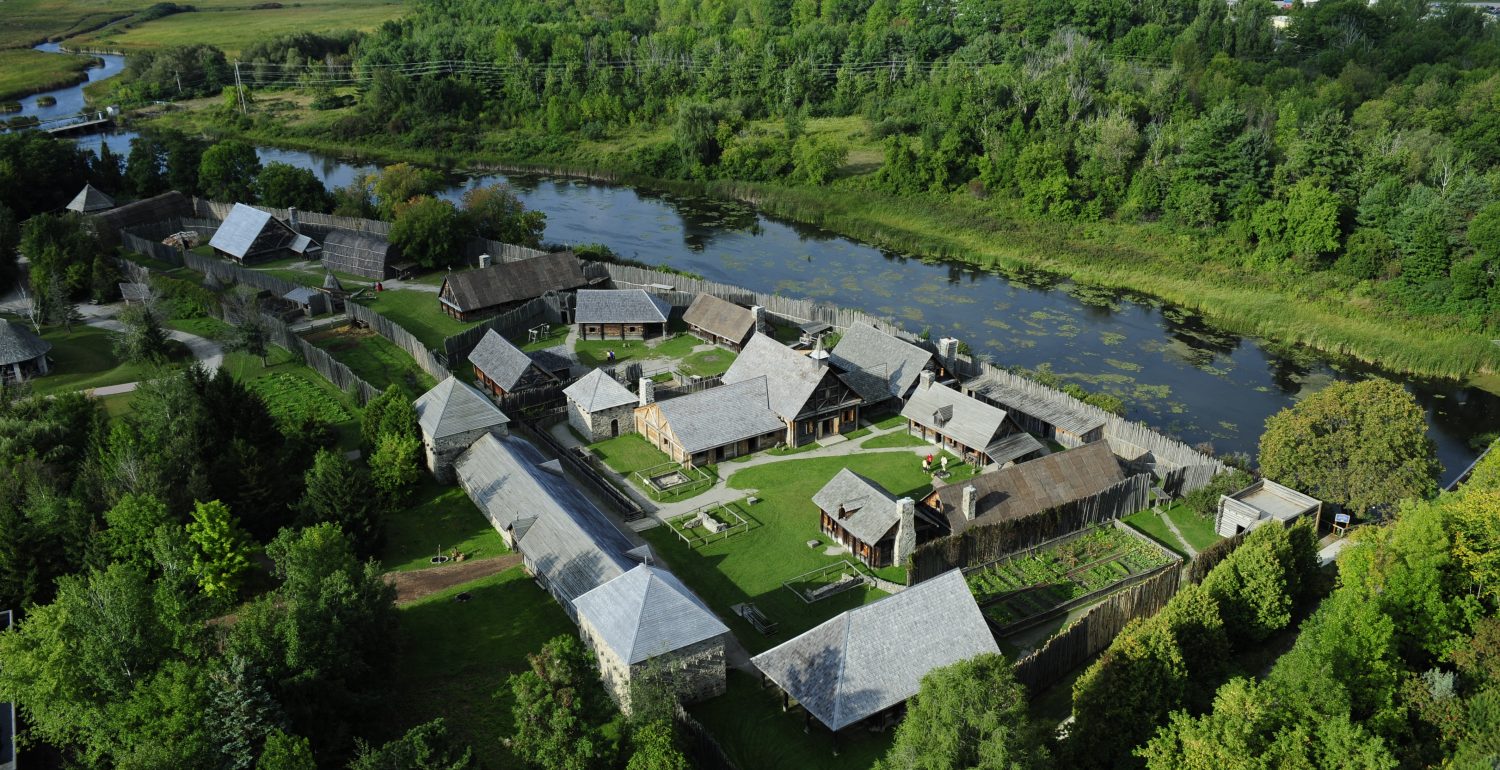Sainte-Marie Among the Hurons, the first French mission in the heart of America

The reconstruction of the 17th-century village built by French missionaries in Huron‑Wendat country, on the shores of Georgian Bay, enables visitors to learn about the decisive events that occurred there between 1639 and 1649. The missionaries settled in the middle of some 20,000 Huron-Wendat, to convert them to Catholicism. Today, guides in period costume reproduce some of the activities of the time to illustrate the challenges that the missionaries had to overcome and the shock experienced by the Indigenous people. Archeological digs have guided the reconstruction of the village, and the information that is presented is based on in-depth historical research.
To learn more…
Reconciling with the past at Sainte-Marie Among the Hurons
The reconstruction of Sainte-Marie Among the Hurons, which was completed in 1967, comprises ten or so buildings surrounded by a palisade. Guides in period costume present several hands-on demonstrations of French and Indigenous activities at the site, such as canoeing, blacksmithing, food preparation and storytelling, breathing new life into this missionary centre. Meanwhile, visitors also discover the basis of French and Indigenous cultures at the time, and the nature of the tragic events that occurred in Huronia. The aim of the interpretation program is to foster mutual understanding and reconciliation. Some 100,000 people visit Sainte-Marie Among the Hurons every year.
An ambitious missionary project
The fortified village of Sainte-Marie comprised 22 buildings when the Jesuit missionaries themselves set fire to it in 1649. This village embodied the scope of the project that inspired them in the first decades of New France. They chose Huronia because this great Indigenous Nation was the principal ally of the French in the fur trade and was sedentary. The missionaries were able to live permanently among the Huron-Wendat and work every day at converting them. Sainte-Marie was their base of operations. The missionaries could rest there, obtain supplies or even take refuge if necessary, between their stays in the Huron villages that surrounded them.
Changing the culture of the Wendat
The objective of the missionaries was to transform the customs and beliefs of the people they called the Huron. It was a major challenge, as this proud and respected people had a highly developed political organization and enjoyed great influence. Thanks to the abundant corn that the Wendat cultivated and their diplomatic talent, they were at the centre of a large trade network with a number of other Amerindian nations. It was through this network that they provided the French with a large quantity of beaver furs in exchange for iron tools and textiles, which were unknown in America. This new Franco-Amerindian commerce strengthened the key position and influence already enjoyed by the Wendat.
Culture shock and devastating epidemics
In the 1630s and 1640s, several dozen French missionaries, soldiers and fur merchants settled permanently among the Huron-Wendat. This change was to have serious consequences, as the French brought with them infectious diseases that were unknown in America, such as smallpox, against which the Wendat were defenseless. In a few years, these diseases decimated thousands of the Wendat, a catastrophe that reduced the population of this nation at least by half. To this collective tragedy was added the constant pressure from the Jesuits to transform their culture.
The end of Huronia and Sainte-Marie
This situation created tremendous disorder. Many Huron-Wendat converted in the hopes of escaping death, since the diseases spared the Whites. However, a number of others accused the missionaries of evil witchcraft and threatened to eliminate them. This is why the French only provided a few firearms to their allies. Meanwhile, the rival nation, the Iroquois, was acquiring many rifles in the colony of New Holland (New York). Emboldened by this superiority, the Iroquois attacked their longstanding enemies, the Wendat, who, weakened and disorganized, suffered a crushing defeat. Small groups fled in all directions. This was the end of Huronia. Missionaries were also captured and killed, while other set fire to Sainte-Marie to prevent this important site from being used by the enemy. These missionaries subsequently returned to New France with a few hundred Huron converts, whose descendants live on today on the Wendake Reserve in the suburbs of Quebec City.






